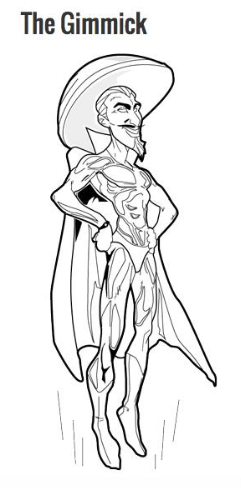So you want to put on some muscle and get stronger, bro. Well, there are some things that you need to know.
Getting strong takes some serious work. I realize that I’m preaching to the choir here. There are a lot of people less advanced than you who get confused by conflicting theories of “the best way to train,” “the best equipment,” and “2 sneaky tricks that I stumbled upon to put on more muscle than ever possible in the world by anybody.”
I’ve been working out for 15 years, running the gamut from scrawny 105-pounder to photoshoot prep to powerlifting to competition k-bell lifting to where I am today – lifting for fun and because I enjoy moving.

You’re in the Mecca for lifters who think, but even after about 15 consistent years in the gym, training hundreds of clients, and writing two books for trainers, I still find myself falling into the training traps below. My point is that it’s really easy if you’re not careful. There’s a lot of really cool sounding stuff and, if you’re like me, you love it and want to do it all at once.
You may or may not learn something new, but what I want you to get out of it is the realization of what’s going on. My hope is that, after reading, you’ll be able to identify when these traps are creeping into your mind, potentially poisoning your results. Upon recognizing them, you’ll be able to ward off the evils that they bring.
1) Stop Jumping From Program to Program
The program that you’re on seems to be pretty good, but you just found out that so-and-so goo-roo has discovered a magic formula to get 10x more muscle in ⅕ of the time. No matter how good it may sound, don’t switch from your current program.
There’s a lot of hype surrounding routines. It’s possible that the next best thing is a bit better than the last best thing. It could also be worse; or the same; or you might not even notice a difference.
Tunnel vision. Focus. Stick to the plan. If you come across something that sounds awesome, make a note of it for when you’re done with your current program.
2) The Girl. The Deadlift. The Injury
She was beautiful. Petite, but with curves, and was wearing pants that showed off her quads that screamed, “Yeah, I squat.”
Seeing her looking my way in the mirror, I did the only logical thing – loaded up an extra plate on the deadlift and proceeded to lift it poorly. First rep went up awkwardly, and on the second, I snapped my shit up.
I was immobile for a week and forced to take prescription muscle relaxants. It took 3 months to rehab the injury back to the point where I could lift.
Whether you’re trying to impress a girl (because girls obviously care that you’re lifting a little more than you did before even though they didn’t know what you lifted before) or attempting to boost your ego, progression too quickly can hamper your gains and might even lead to an injury.
As a corollary, progressing too quickly doesn’t necessarily mean adding weight. Ever walk into a gym and see somebody doing a single leg squat with barbell on a Bosu ball with terrible form? Always ask whether the variation of the exercise that you’re doing is the best option for you, keeping in mind your goals. What often seems like a progression because it’s more complicated is usually the opposite.
There’s a myth that you need to “trick” or “confuse” the body to adapt. I don’t know what those words mean, but I’m sure that the body isn’t something that you can fool.
The body attempts to stay in homeostasis (a state of balance). Whatever your training goal, the body wants to stay where it is, and you want it to adapt. It takes a sufficient amount of continual effort to move the body to a new homeostatic point. This is why it takes a lot of consistent effort to force the body to adapt, but once it does, maintaining becomes a less-involved task.
Attempting to progress too quickly by making the weight too heavy or changing to a fancy variation of an exercise is like trying to skip a step. There are no tricks – just focus and hard work every day.
3) Not Knowing What You Want
There is no “best exercise to build the abs” or “best workout to burn fat.” The best workout is different for everybody.
Having a long-term vision gives you something to work toward and get excited about. It provides direction. What you want to achieve may change over time (I mentioned above that I’ve changed my training goals quite a bit over the years), but at any given time, you should know what you want to achieve.
What’s most important here is that everything you do in the gym should be directed toward this long-term goal, which will form the basis of your progression planning.
4) Listening to The Gimmick

I can’t think of a better tool for burning fat than a barbell. Most commercial gyms have spent a lot of money to buy a wide range of needless tools.
And don’t get me wrong; they know that these tools are needless. Gym owners have told me time and time again that they have so many machines, wobbly boards, and balls because the equipment is what sells the gym. When giving a tour to a potential member, the member needs something to justify choosing one gym over another. This justification isn’t necessarily logical. To convince somebody who doesn’t know a lot about training that the best tool is some weights and an empty room takes a lot of time – time that the salesperson generally doesn’t have.
Understand the benefits and downfalls of the gadgets at your disposal and when to use them. Always consider point No. 3 above when deciding what equipment to use – what’s your long-term goal? – when deciding whether to use a toy. The answer will almost always be “no.”
5) Listening to the Wrong Person
In training, there are very few absolutes. Everything works for a time. And a new stimulus generally works well at the start. The result is that new theories of how to accomplish the same goals pop up. Most of these techniques work. The problem is that in order for the purveyor of this information to make money, he or she needs to brand the idea or give it a “hook.”
The hook is meant to tie the information in a neat package that makes it applicable for sale. It also is a way for the creator to make the information his or her own, establishing expert status, therefore opening the door for a business built around that way of thinking.
Again, this isn’t always bad. But there’s one absolute scenario where it is.
The scientific method works on a basic principle: You can be right a million times over, but once you’re proven wrong once, you’re wrong for good. The problem with building an entire business around a central “hook” is that if that hook is ever proven wrong, it becomes impossible for the information provider to pivot. The resulting effect is cherry-picking research, insulating followers from any other ways, and not allowing informed debate.
Listen to those who operate with zero bias to a brand or idea that might force him or her to protect the business. If somebody is willing to admit that he or she was wrong and change, then they’re a person to pay attention to.




